Books by Rosario CEBRIÁN FERNÁNDEZ
Ediciones de la Universidad de Castilla-La Mancha, 2023
The funds of the Museum of Cuenca hold authentic collections of materials that come from archaeol... more The funds of the Museum of Cuenca hold authentic collections of materials that come from archaeological despoilment and from donations and deposits made by private individuals. They constitute a valuable documentation of the cultural and patrimonial heritage of the province. Most of them remain unpublished. Among these materials, there is a group of metal objects, excluding coins, which are characterised by their typological heterogeneity. This volume presents a study of a total of 1.745 pieces, devoid of archaeological context. They have therefore been dated by formal parallels in the peninsular and foreign spheres, covering a chronological period between the Bronze Age and the Middle Ages

This work contains the archaeological documentation of northwest Segobriga necropolis which is pl... more This work contains the archaeological documentation of northwest Segobriga necropolis which is placed 450 m from the pomerium. the burial area is organized around a funeral road that runs between the CarthagoNova-Complutum road and that one that reaches the city from the north. this necropolis was used from the early first century to the mid-second century aD, when the circus was built and the cemetery had to be dismantled.
In the archaeological excavations carried out between 2006 and 2009 seventy six incinerations and three inhumations were found. The necropolis had a collective ustrinum for cremation of corpses and an area for burials in graves. On both sides of the road there were burial plots enclosed by landmarks with indicatio pedatura or surrounded by wooden fences that have not left archaeological trace.
Nearly two hundred inscriptions where found next to those structures related to funeral rituals. These steles reveal the use of the necropolis mainly by slaves and freedmen, many of them from Greece. There were also memorials as evidenced by the discovery of a remarkable set of elements of architectural decoration and sculptures intended for its ornamentati
Segobriga 2009 Resumen de las intervenciones arqueológicas JUAN MANUEL ABASCAL ANTONIO ALBEROLA R... more Segobriga 2009 Resumen de las intervenciones arqueológicas JUAN MANUEL ABASCAL ANTONIO ALBEROLA ROSARIO CEBRIÁN IGNACIO HORTELANO CUENCA 2010 C U-2 4 6 -2 0 1 0 9 7 8 -8 4 -6 1 4 -1 6 2 1 -9 Segobriga 2009 Resumen de las intervenciones arqueológicas CUENCA 2010 1 Un resumen de las intervenciones y estudios sobre Segobriga en los últimos años puede verse en Abascal -

Abstract. The finding of the roman Circus in Segobriga turns this little municipium into the fou... more Abstract. The finding of the roman Circus in Segobriga turns this little municipium into the fourth city in Hispania, after the three provincial capitals (Tarraco, Corduba and Emerita), where we know the three show buildings: Theatre, Amphitheatre and Circus. This discovery confirms its really complex urban life as a great mining metropolis and the dynamism of its decurional elites during the IInd century A.D. Furthermore, it shows the exceptional preservation of the archaeological remains in this singular city. The overlap of the great circus over a sepulchral way full of knocked down and covered funeral monuments has provide us incomparable archaeological and epigraphic information. Finally, the research has revealed another fascinating fact: after all those
enormous arranging and levelling works carried out in the second half of the IInd century A.D., the great Circus of Segobriga maybe never became ended.
Catálogo e índices del fondo documental "Antigüedades e Inscripciones" dentro de la serie Comisi... more Catálogo e índices del fondo documental "Antigüedades e Inscripciones" dentro de la serie Comisión de Antigüedades de la Real Academia de la Historia.
Análisis arqueológico de los soportes epigráficos con la finalidad de establecer los distintos ta... more Análisis arqueológico de los soportes epigráficos con la finalidad de establecer los distintos talleres lapidarios en las ciudades valencianas entre los siglos I-III d. C. Se analizan detalladamente las características formales de los soportes, el material empleado en su elaboración, las molduras y los elementos decorativos de los monumentos que los presentan, es decir, se estudian todos aquellos elementos intrínsecos al soporte de un texto epigráfico conducentes a la individualización del ambiente de un taller o del estilo o de la moda seguida por los artesanos que los ejecutaron.
Book Chapters by Rosario CEBRIÁN FERNÁNDEZ
Mytra 13, 2024
The overview of domestic architecture in Segobriga is still partial, although it offers an import... more The overview of domestic architecture in Segobriga is still partial, although it offers an important number of evidences between Late-Republican and High Middle Ages. The archaeological record is clear, but suffers from the problems of urban archaeology and overlapping cities, offering fragmentary data that make it difficult to interpret spaces and uses. We are still a long way from obtaining an overall perspective on the domestic landscape in the early imperial city, something that cannot be achieved until a systematic programme of excavations is reactivated. In spite of this, the density of habitation attested is such that it allows us to establish broad patterns of occupation from the second half of the 1st century BC to the Emirate period.
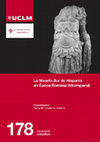
Cebrián, R., "Las tabernae del foro de Segobriga. Arquitectura, funcionalidad y cronología", en G. Carrasco (coord.), La Meseta Sur de Hispania en Época Romana Altoimperial (Colección de Estudios, 178), Ediciones de Castilla-La Mancha, Cuenca, 2024, pp. 307-337. Colección de Estudios 178, 2024
Más allá del pórtico meridional del foro de Segobriga se situó una fila de siete estancias, de pl... more Más allá del pórtico meridional del foro de Segobriga se situó una fila de siete estancias, de planta rectangular y de dimensiones casi idénticas, que arquitectónicamente se identifican con tabernae. Desde el punto de vista constructivo son posteriores a la basílica y la curia puesto que las estructuras de su perímetro se adosan a ellas. Estuvieron en uso hasta época tardía, cuando se construyeron nuevas estructuras habitacionales, que reaprovecharon en parte, los muros de los originales espacios.
Este trabajo presenta la arquitectura de las habitaciones situadas en el extremo meridional del foro de Segobriga, la determinación de la fase constructiva y reforma y la identificación de los usos a partir de los datos proporcionados por su excavación
Lexicon of the Greek and Roman Cities and Place Names in Antiquity, ca 1500 B.C. - Ca A.D. 500, 2024
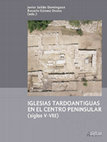
Cebrián, R., Hortelano, I., "La basílica tardoantigua de Segobriga (Cabeza del Griego, Saelices, Cuenca) y otros centros de culto del interior de la provincia Carthaginensis", en J. Salido y R. Gómez Osuna (eds.), Iglesias tarodantiguas en el centro peninsular (siglos V-VIII), 2022, pp. 327-351. The Episcopal Sees of Arcavica, Segobriga and Valeria are documented in the councils of Toledo fr... more The Episcopal Sees of Arcavica, Segobriga and Valeria are documented in the councils of Toledo from the end of the 6th century and throughout the 7th one. However, the archaeological record of this period is uneven: in Segobriga, the excavations have recognised the spaces of reference for the organisation of the diocese, such as a funeral basilica in the suburbium and a plausible episcopium in the city, while in Arcavica and Valeria the data are still weak. Nevertheless, evidence of minor churches, baptisteries in private settings, rocky hermitages and rural necropolises reveal the intense Christianisation of the southern territory of ancient Celtiberia.
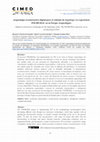
The POLIRURAL project is implementing ICT in the visit Segóbriga Archaeological Park, developing ... more The POLIRURAL project is implementing ICT in the visit Segóbriga Archaeological Park, developing different tools through new innovative technologies, which help, together with an appropriate interpretation strategy, to transfer scientific knowledge of the site to the general
public. To date, the project has incorporated a wide range of content that deals with the dissemination of heritage and nature through numerous cutting-edge techniques such as Augmented Reality, photogrammetry, virtual reconstructions, 3D recreations, sound alerts, image
recognition, among others. others, which accurately reconstruct various excavated spaces, on thereal environment and without losing the perception of it. Thus, through the development of new resources and virtual tools, access to the archaeological knowledge of the site, the essence of its Park, is made easier for different types of users. The project has managed to value scientific research, adapting it to the needs of the visitor through the efficient management of available resources. A multidisciplinary team participates with extensive previous experience in archaeological heritage, the creation of interpretive content and educational dissemination, as well as in research and development projects. POLIRURAL, is a European Rural Development project financed through the Horizon 2020 Innovation funds. The Tragsa Group participates in it on behalf of Spain together with 16 European countries

In the hill of Cabeza de Griego (district of Saelices, in the Cuenca Province), a town was founde... more In the hill of Cabeza de Griego (district of Saelices, in the Cuenca Province), a town was founded out of a castrum from the Iron Age in Celtiberian territory, whose main economic activity was the exploitation of lapis specularis, a translucent gypsum used as window glass. Its exceptional location at the crossroads of land routes that linked the Ebro Valley with the Betica and the Lusitania and the center of the peninsula with the eastern harbors, especially with Carthago Nova, turned the city into an important trade center with the Mediterranean,
where materials and products of different places arrived.
Its name, Segobriga, reminded of its mythical foundation by a character named Sego, whose memory had been maintained by oral tradition since the unknown date of its creation. Pliny would be the one to include
Segobriga in his lists of tributary cities of the conventus Carthaginensis, as caput Celtiberiae, together with other cities south of the Meseta and in the southeast of the peninsula. As a pilgrim community, the inhabitants of Segobriga named senator L. Livius Ocella their protector, grandfather of Emperor Galba, during Caesar’s or the Second Triumvirate’s era and minted money with the name Segobris on it.
In the middle of the 1st century BC, the city started important urbanization works that were planned with orthogonal streets and aligned with the city walls. On the northern side of the hill, the recent archaeological excavations have revealed remains of some insulae of dwellings of the pre-Augustan phase. At the same location, a small temple with an in antis structure and the so-called Theater Baths were part of the urban structure at this time.
The granting of the municipal status made possible the construction process of the new urban building plan from the early Augustan period, whose forum was the greatest example. At the end of the 1st Century AD, Segobriga had become a Roman city. It had a theater, an amphitheater, new
baths, a building exclusively dedicated to commercial transactions and a large public square surrounded by porticoed galleries near the original temple. Important public works had also been achieved, such as piping
drinking water through an aqueduct, paving the streets and installing fountains that improved the life in the city. After the construction ex novo of a circus in the middle of the 2nd Century AD, the public construction program ended, as far as we know today from the excavations.

Roman cities were full of epigraphic monuments. A wide range of inscriptions were exhibited publi... more Roman cities were full of epigraphic monuments. A wide range of inscriptions were exhibited publicly, chiseled stones that provided varied information to those who read them. Current research on Epigraphy contributes to the interpretation of the urban landscape of the Hispanian cities by providing a scientific framework through which to understand the role played by epigraphic texts in Roman cities. Italy was a pioneer in the use of epigraphic monuments within urban architectural spaces
for the purpose of scientific dissemination. The Roma Antica: Come era e come è series has been published since the 1960s, evoking the landscape of the imperial capital. Segobriga (Saelices, Cuenca) was one of the first examples in Spain of virtual recreation of the public space of a Roman city. It was a pioneering work in the creation of a language that would help communicate Epigraphy to the general public. This contribution presents the tools of dissemination and disclosure of accessible Roman archaeological accessible in Spain where epigraphic finds are a key element in the archaeological interpretation.
: Archaeological excavations carried out in urban burial areas from Early Imperial age show that ... more : Archaeological excavations carried out in urban burial areas from Early Imperial age show that practically the only funeral rite was incineration. The cremated bone remains were deposited inside an urn buried in a small pit or resting directly on the ground. Domestic ceramic pots were commonly used and, less frequently, glass vessels, due to its higher cost. This paper analyses the typology of the sixty-five cinerary containers found in Segobriga in order to establish their evolution and chronological assignment.




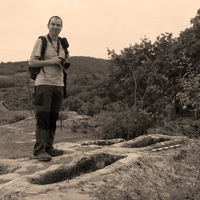
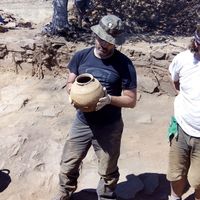

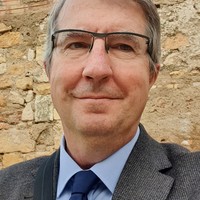


Uploads
Books by Rosario CEBRIÁN FERNÁNDEZ
In the archaeological excavations carried out between 2006 and 2009 seventy six incinerations and three inhumations were found. The necropolis had a collective ustrinum for cremation of corpses and an area for burials in graves. On both sides of the road there were burial plots enclosed by landmarks with indicatio pedatura or surrounded by wooden fences that have not left archaeological trace.
Nearly two hundred inscriptions where found next to those structures related to funeral rituals. These steles reveal the use of the necropolis mainly by slaves and freedmen, many of them from Greece. There were also memorials as evidenced by the discovery of a remarkable set of elements of architectural decoration and sculptures intended for its ornamentati
enormous arranging and levelling works carried out in the second half of the IInd century A.D., the great Circus of Segobriga maybe never became ended.
Book Chapters by Rosario CEBRIÁN FERNÁNDEZ
Este trabajo presenta la arquitectura de las habitaciones situadas en el extremo meridional del foro de Segobriga, la determinación de la fase constructiva y reforma y la identificación de los usos a partir de los datos proporcionados por su excavación
public. To date, the project has incorporated a wide range of content that deals with the dissemination of heritage and nature through numerous cutting-edge techniques such as Augmented Reality, photogrammetry, virtual reconstructions, 3D recreations, sound alerts, image
recognition, among others. others, which accurately reconstruct various excavated spaces, on thereal environment and without losing the perception of it. Thus, through the development of new resources and virtual tools, access to the archaeological knowledge of the site, the essence of its Park, is made easier for different types of users. The project has managed to value scientific research, adapting it to the needs of the visitor through the efficient management of available resources. A multidisciplinary team participates with extensive previous experience in archaeological heritage, the creation of interpretive content and educational dissemination, as well as in research and development projects. POLIRURAL, is a European Rural Development project financed through the Horizon 2020 Innovation funds. The Tragsa Group participates in it on behalf of Spain together with 16 European countries
where materials and products of different places arrived.
Its name, Segobriga, reminded of its mythical foundation by a character named Sego, whose memory had been maintained by oral tradition since the unknown date of its creation. Pliny would be the one to include
Segobriga in his lists of tributary cities of the conventus Carthaginensis, as caput Celtiberiae, together with other cities south of the Meseta and in the southeast of the peninsula. As a pilgrim community, the inhabitants of Segobriga named senator L. Livius Ocella their protector, grandfather of Emperor Galba, during Caesar’s or the Second Triumvirate’s era and minted money with the name Segobris on it.
In the middle of the 1st century BC, the city started important urbanization works that were planned with orthogonal streets and aligned with the city walls. On the northern side of the hill, the recent archaeological excavations have revealed remains of some insulae of dwellings of the pre-Augustan phase. At the same location, a small temple with an in antis structure and the so-called Theater Baths were part of the urban structure at this time.
The granting of the municipal status made possible the construction process of the new urban building plan from the early Augustan period, whose forum was the greatest example. At the end of the 1st Century AD, Segobriga had become a Roman city. It had a theater, an amphitheater, new
baths, a building exclusively dedicated to commercial transactions and a large public square surrounded by porticoed galleries near the original temple. Important public works had also been achieved, such as piping
drinking water through an aqueduct, paving the streets and installing fountains that improved the life in the city. After the construction ex novo of a circus in the middle of the 2nd Century AD, the public construction program ended, as far as we know today from the excavations.
for the purpose of scientific dissemination. The Roma Antica: Come era e come è series has been published since the 1960s, evoking the landscape of the imperial capital. Segobriga (Saelices, Cuenca) was one of the first examples in Spain of virtual recreation of the public space of a Roman city. It was a pioneering work in the creation of a language that would help communicate Epigraphy to the general public. This contribution presents the tools of dissemination and disclosure of accessible Roman archaeological accessible in Spain where epigraphic finds are a key element in the archaeological interpretation.
In the archaeological excavations carried out between 2006 and 2009 seventy six incinerations and three inhumations were found. The necropolis had a collective ustrinum for cremation of corpses and an area for burials in graves. On both sides of the road there were burial plots enclosed by landmarks with indicatio pedatura or surrounded by wooden fences that have not left archaeological trace.
Nearly two hundred inscriptions where found next to those structures related to funeral rituals. These steles reveal the use of the necropolis mainly by slaves and freedmen, many of them from Greece. There were also memorials as evidenced by the discovery of a remarkable set of elements of architectural decoration and sculptures intended for its ornamentati
enormous arranging and levelling works carried out in the second half of the IInd century A.D., the great Circus of Segobriga maybe never became ended.
Este trabajo presenta la arquitectura de las habitaciones situadas en el extremo meridional del foro de Segobriga, la determinación de la fase constructiva y reforma y la identificación de los usos a partir de los datos proporcionados por su excavación
public. To date, the project has incorporated a wide range of content that deals with the dissemination of heritage and nature through numerous cutting-edge techniques such as Augmented Reality, photogrammetry, virtual reconstructions, 3D recreations, sound alerts, image
recognition, among others. others, which accurately reconstruct various excavated spaces, on thereal environment and without losing the perception of it. Thus, through the development of new resources and virtual tools, access to the archaeological knowledge of the site, the essence of its Park, is made easier for different types of users. The project has managed to value scientific research, adapting it to the needs of the visitor through the efficient management of available resources. A multidisciplinary team participates with extensive previous experience in archaeological heritage, the creation of interpretive content and educational dissemination, as well as in research and development projects. POLIRURAL, is a European Rural Development project financed through the Horizon 2020 Innovation funds. The Tragsa Group participates in it on behalf of Spain together with 16 European countries
where materials and products of different places arrived.
Its name, Segobriga, reminded of its mythical foundation by a character named Sego, whose memory had been maintained by oral tradition since the unknown date of its creation. Pliny would be the one to include
Segobriga in his lists of tributary cities of the conventus Carthaginensis, as caput Celtiberiae, together with other cities south of the Meseta and in the southeast of the peninsula. As a pilgrim community, the inhabitants of Segobriga named senator L. Livius Ocella their protector, grandfather of Emperor Galba, during Caesar’s or the Second Triumvirate’s era and minted money with the name Segobris on it.
In the middle of the 1st century BC, the city started important urbanization works that were planned with orthogonal streets and aligned with the city walls. On the northern side of the hill, the recent archaeological excavations have revealed remains of some insulae of dwellings of the pre-Augustan phase. At the same location, a small temple with an in antis structure and the so-called Theater Baths were part of the urban structure at this time.
The granting of the municipal status made possible the construction process of the new urban building plan from the early Augustan period, whose forum was the greatest example. At the end of the 1st Century AD, Segobriga had become a Roman city. It had a theater, an amphitheater, new
baths, a building exclusively dedicated to commercial transactions and a large public square surrounded by porticoed galleries near the original temple. Important public works had also been achieved, such as piping
drinking water through an aqueduct, paving the streets and installing fountains that improved the life in the city. After the construction ex novo of a circus in the middle of the 2nd Century AD, the public construction program ended, as far as we know today from the excavations.
for the purpose of scientific dissemination. The Roma Antica: Come era e come è series has been published since the 1960s, evoking the landscape of the imperial capital. Segobriga (Saelices, Cuenca) was one of the first examples in Spain of virtual recreation of the public space of a Roman city. It was a pioneering work in the creation of a language that would help communicate Epigraphy to the general public. This contribution presents the tools of dissemination and disclosure of accessible Roman archaeological accessible in Spain where epigraphic finds are a key element in the archaeological interpretation.
in Hispania by the mortar that does not respond to what the Classic source transmit us.
technological configuration.
2013-2016.
the 5th century AD. Nothing is known about the sponsors of the new major architectural project, however, it is obvious that the building reflects the incipient power of the Christian Church in Segobriga, a prelude to the later definitive shaping of a prevalent late antique urban image.
INTERPRETATIC's experience is in turn serving as a cornerstone for another European project financed by means the Horizon2020 innovation funds: the POLIRURAL project, in which TRAGSA and TRAGSATEC participate and of which the following countries are also partners: Czech Republic, Slovakia, Latvia, Greece, Portugal, Israel, United Kingdom, Italy, Norway, Belgium, Northern Macedonia, Austria , Finland, Poland and Ireland.
outside to the imma and summa cavea was drawn up from the upper side of the building. We propose a restitution of the access system to the south stand based on the archaeological information extracted from its excavation
During that Roman period the city covered 13 Has. Integrated in the conventus Caesaraugustanus, in the Augustan times the city began to undertake important public works leading to its urban development. Recent archaeological excavations (2007-2016) has discovered the cryptoporticus, which sustained the porticoes of the south side of the forum, and its adjacent depot. A complete study of the architectonic structure and its decoration allow us now to the whole analysis of both its function and its final aspect, the fixing of its early stage, its reforms and a proposal of reconstruction to the whole public area.
Este Seminario está dirigido a alumnos de los grados de Arqueología, Historia e Historia del Arte y másteres de Arqueología. Se trata de una actividad gratuita y para inscribirse hay que mandar un email a luirom03@ucm.es Para obtener el certificado de asistencia el alumnado inscrito deberá asistir a todas las sesiones. El Seminario tiene el reconocimiento de 1 ECTS optativo para alumnos de grado de la Universidad Complutense.
Este Seminario está dirigido a alumnos de los grados de Arqueología, Historia e Historia del Arte y másteres de Arqueología. Se trata de una actividad gratuita y para inscribirse hay que mandar un email a marcebri@ucm.es. Para obtener el certificado de asistencia el alumnado inscrito deberá asistir a todas las sesiones. El Seminario tiene el reconocimiento de 1 ECTS optativo para alumnos de grado de la Universidad Complutense.
El objetivo de este Seminario es abordar el estudio comparativo de la organización espacial y estructuración morfológica del territorio meridional de la nueva provincia Celtiberia surgida del decretum de ecclesia Toletana del año 610 de Gundemaro hasta la creación y afianzamiento de la cora de Santaver/Santabariya bajo el califato de Córdoba (ss. X-XI).